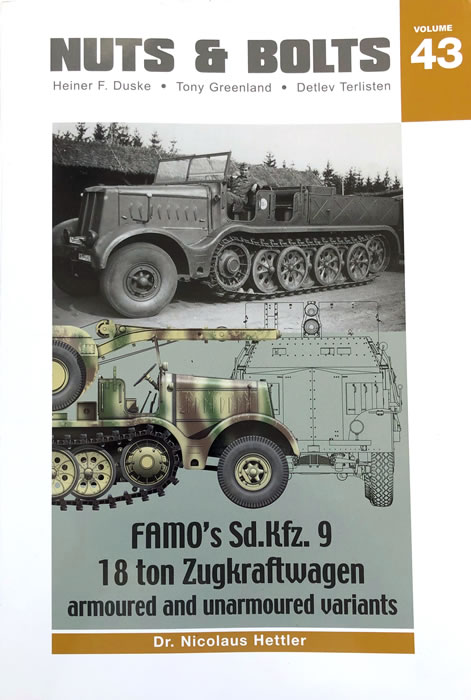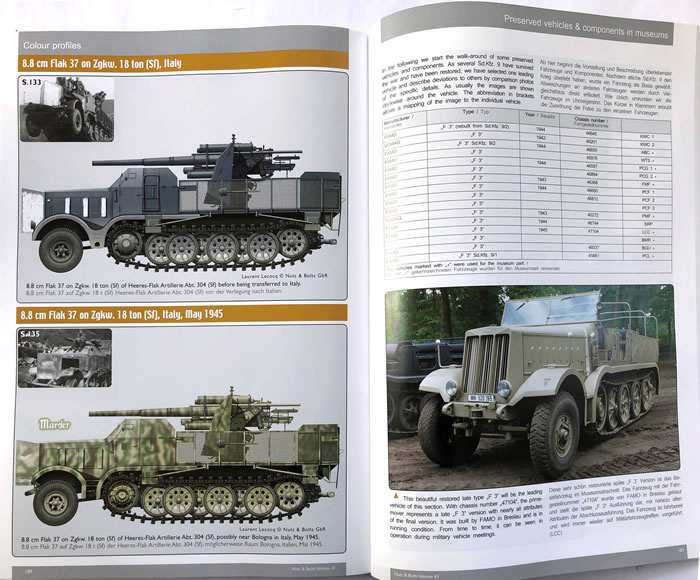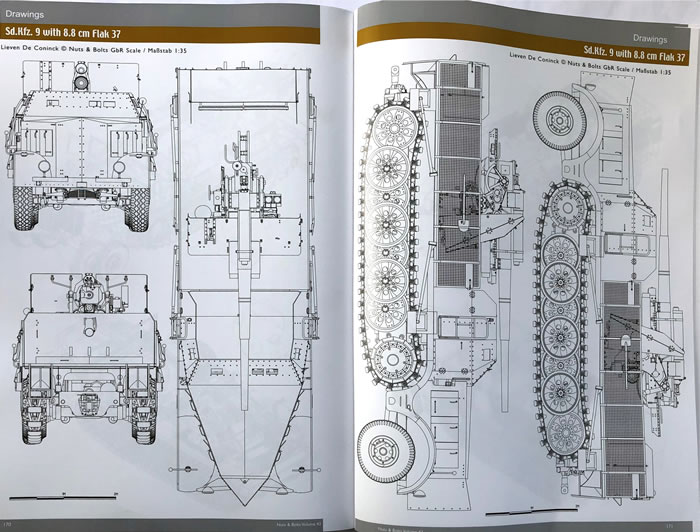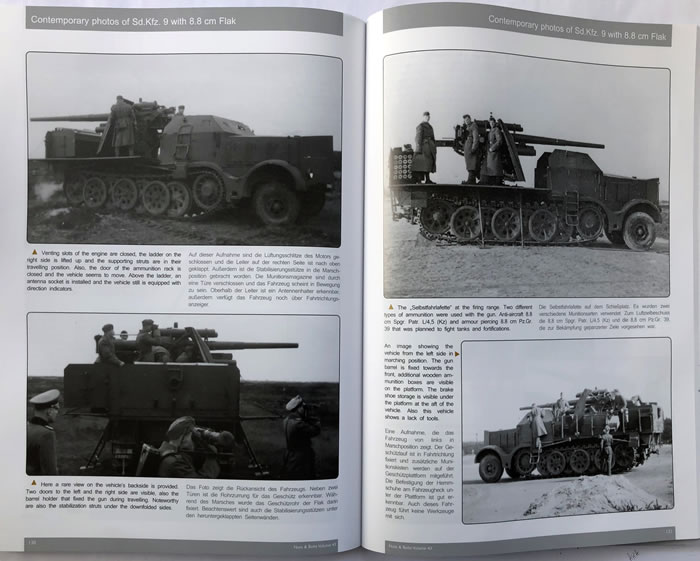|
|
|
|
| Home > Reviews > German > Nuts & Bolts Vol. 43 - Famo’s Sd.kfz.9 18 ton Zugkraftwagen Armoured and Unarmoured Variants by Dr Nicolaus Hettler |
Nuts & Bolts Vol. 42
Famo’s Sd.kfz.9 18 ton Zugkraftwagen Armoured and Unarmoured Variants
Reviewed by Luke Pitt

Summary
| Title and Publisher: | Nuts and Bolts Volume 43 |
| ISBN: | Not quoted |
| Media and Contents: | Soft cover; German and English text; 232 pages; 390 photos (240 contemporary photos, 125 colour photos of the surviving vehicles in public and private collections, 30 colour photos of five models ); 16 camouflage schemes, tactical markings, 4 tables of organsisation (KStN) 2D drawings of all known variants incl. Sd.Ah.116, some of them in 3D |
| Price: | Euro 29.90 available online from Nuts & Bolts' website |
| Review Type: | FirstRead |
| Advantages: | An excellent publication that strikes the right balance between historical fact, photo coverage and high quality colour profiles. |
| Disadvantages: | |
| Recommendation: | Highly Recommended |
FirstRead
I find the Nuts and Bolts series of reference books incredibly difficult to review. Why, you ask? Well, there so good and their lies the problem. Reviewers by their very nature should point out perceived faults and offer solutions. I can’t for the life of me do that with this series of books, I merely thumb through the pages thinking to myself “how good is this”?
The books offer, a one-stop reference source for the particular vehicle they cover. I like the convenience of these books. For me, as a modeller, it is so much easier to just grab them, open to the section I want and, basically getting on with it. In reality, these books are like five traditional books in one: a development history, wartime photos, line drawings, colour profiles and a comprehensive walk around.

This latest reference work on Famo’s Sd.kfz.9 18 ton Zugkraftwagen boasts some 213 pages and is logically broken down into segmented parts. The first 59 pages are devoted to the development and technical specification in German service. Within this section, selected subsections discuss the development and technical description in detail and also the various kits and accessories on offer. The book is jammed packed with details like all these variations and how they were used in the field. The next section is lavishly illustrated with a little over 207 black and white war time photos. The clarity and captions on these photos are noteworthy as they cover an infinite number of additions and modifications adopted in the field.

The next 29 pages are devoted to 1:35 scale plans of all the known versions. The illustrations and three-dimensional drawings by Lieuen De Coninck are wonderfully done. Sixteen colour profile drawings follow over the next eight pages and are wonderfully executed and presented. What I like about these profiles is that within the profile itself, a small black and white reference photo is inserted to which the artist has given his interpretation. This, I believe should be the industry standard.
The next 38 pages consist of 123 colour and black and white walk around photos of restored examples. The entire vehicle is covered from the interior; engine through to a detailed study of how all the various hatches opened. The last 5 pages are devoted to three model builds by Peter Zakanyi, Tony Greenland and Darren Thompson.

In summary, if you plan to build a FAMO then you really can’t go past this title. It has everything you would need reference-wise. I would encourage the authors of these books to expand the series to branch out and do Allied vehicles. Now that would be something, wouldn’t it?
Thanks to Nuts & Bolts for the sample
Nuts and Bolts publications are available online from their website.

